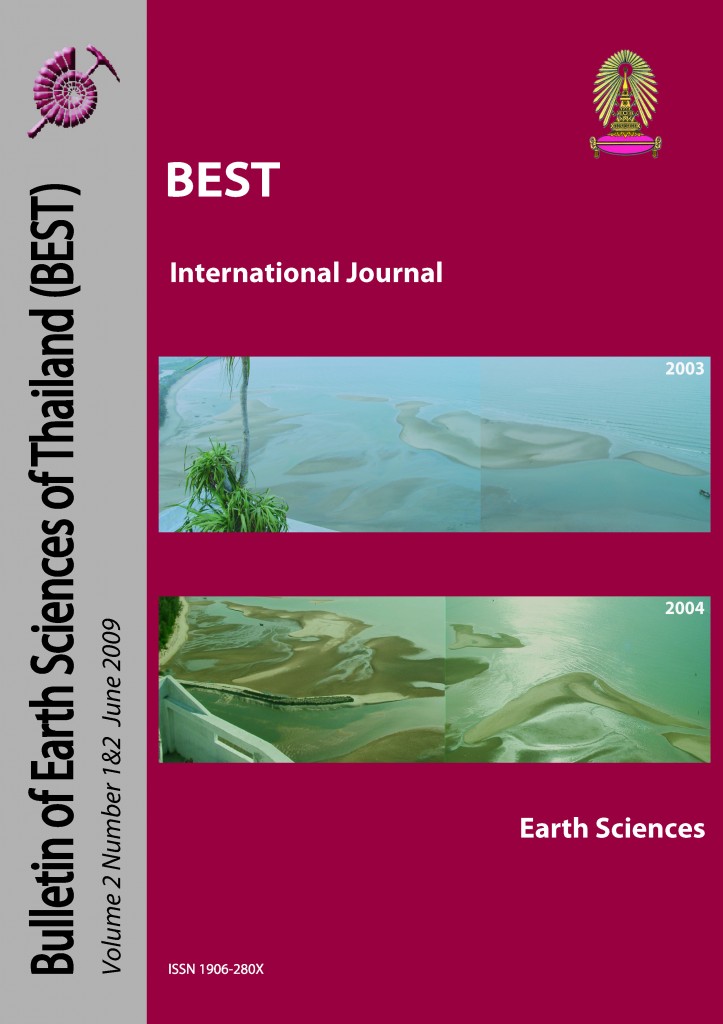Gemological Characteristics of Corundum from Gia Nghia, Southern Vietnam Ngamwilai Somwangsombat1* and, Chakkaphan Sutthirat
Main Article Content
Abstract
Thailand is one of the most famous gem- producing countries in the world. Corundum is the most used material in this industry. That has lead to a rapid depletion of corundum reserves in Thailand. Consequently, gem deposits from other countries are needed to support the gem industry in Thailand.. Vietnam is a good prospect in this approach, especially in respect of ruby and sapphire. It has abundant gem corundums that have been extensively mined for a few decades. Gia Nghia corundum from basaltic terrane in southern Vietnam is a good prospect for future development. Thirty-seven samples of blue sapphires from Gia Nghia deposit were selected for detailed study. All the samples were cut and polished as flat surfaces parallel to the c–axis for further investigation (Fig.1). Their optical properties fall within the common corundum range (Table 1). Luminescence under ultraviolet lamp is inert for both long wave and short wave waves. The common mineral inclusions consist of feldspar and zircon. Feldspar crystals are colorless. . Zircon inclusions occur as single crystals. 1.07-3.20 % wt of iron-rather high has been estimated by semi–quantitative EDXRF analysis (Table 2). The color of sapphire samples is indicated, by using UV-VIS-NIR spectra (Fig. 2). Fe and Ti occur in most of the blue sapphire samples. UVVIS-NIR spectrograms show absorption bands due to Fe2+/Ti4+ and Fe2+/Fe3+ intervalence charge transfers with the maximum at 571 and 579 nm, respectively, and absorption peaks due to Fe3+ at 377, 378 and 870 nm. The absorption band in the near infrared (NIR) with a maximum at around 850 nm is typically found in basaltic sapphire. Fourier Transform Infrared (FTIR) spectrograms (Fig. 3) show absorptions due to structural O–H stretching peaks at 3309 cm-1. Although Gia Nghia corundum samples could not be distinctly separated from basaltic corundum elsewhere, they have extremely high iron content compared with the other basaltic sapphires; besides, some features (e.g. mineral inclusion, trace composition and absorption spectra) may also be useful for recognizing their gem origin.
Article Details

This work is licensed under a Creative Commons Attribution-NonCommercial-NoDerivatives 4.0 International License.
Copyright © 2008 Department of Geology, Faculty of Science, Chulalongkorn University. Parts of an article can be photocopied or reproduced without prior written permission from the author(s), but due acknowledgments should be stated or cited accordingly.

